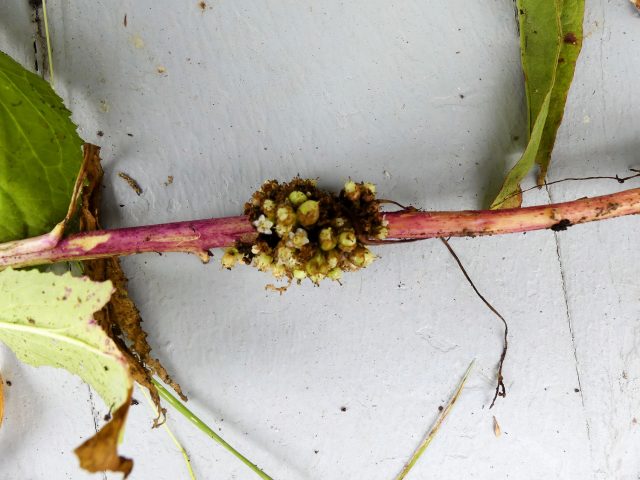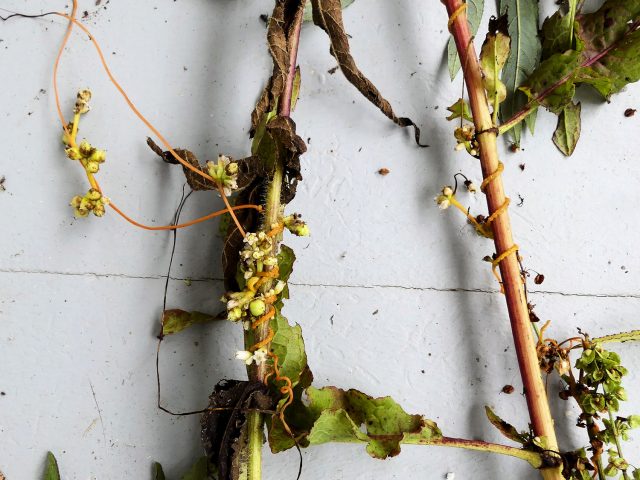 It’s a scene straight out of a horror movie: a thread-like orange stem emerges from the ground, circling around counter-clockwise, searching by smell* for a potential victim. When it finds an unsuspecting, vulnerable plant, it wraps around it and pierces the victim’s stem, sucking water and nutrients from the host plant like a vampire. This nightmare is called
It’s a scene straight out of a horror movie: a thread-like orange stem emerges from the ground, circling around counter-clockwise, searching by smell* for a potential victim. When it finds an unsuspecting, vulnerable plant, it wraps around it and pierces the victim’s stem, sucking water and nutrients from the host plant like a vampire. This nightmare is called field swamp dodder (Cuscuta campestris gronovii)**. It’s the creepiest native plant I know!

Doesn’t it look like witches hair? Photo credit: Scot Nelson

So you can imagine my dismay when I found this by the used-to-be-pond, wrapped around my one and only cardinal flower.
The only way to eradicate dodder is to pull up the host plant. I didn’t want to pull up my precious cardinal flower, so I cut it off at the base and hoped that was good enough. I also searched the area for other plants in dodder’s stranglehold and pulled them up. For a plant that’s supposed to be such a nightmare, I didn’t find that much. That wasn’t too reassuring, as I wasn’t sure if I just hadn’t looked hard enough or had indeed caught it early. I’ll have to revisit the area next year to see if I find more.

Of course, it’s best to pull the host plants before the dodder has gone to seed. Here you can see both flowers and developing seed capsules. (Click to enlarge)
*It detects volatile chemicals released by the (potential) host plant and grows toward them. (Don’t believe me? Read this.) We use our nose to detect volatile chemicals in the air and we call it smelling. So I’m saying dodder finds its victims by smell, even though it doesn’t have a nose.
**After I wrote this post, I realized I had misidentified the species. To be fair, dodder species “are distinguished by tiny differences in their flower structure,” as the Connecticut Botanical Society points out, so it was an easy mistake to make. And Minnesota Wildflowers notes “C. gronovii appears (at least in literature) not to be the pest that some other species are capable of.” So perhaps I don’t need to be quite so scared of this plant.

